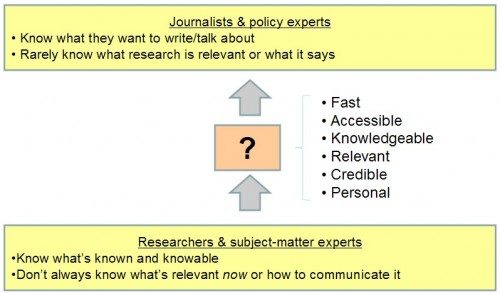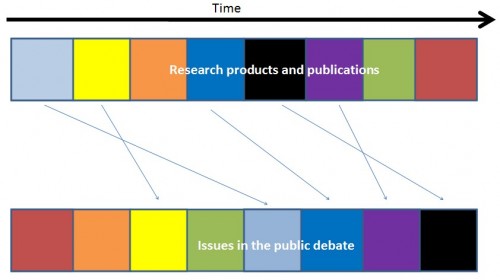Bill Gardner continues the conversation about translating health policy-relevant research for decision makers with a call for more journals dedicated to that mission.
One thing would help is more journals that bridged the academy / policy gap. There are LOTS of journals. But there are few that edit for policy relevance and a broad audience while striving for a non-partisan, evidence-based approach. The paradigm cases are Foreign Affairs and Health Affairs, which may tell us that we need editors like Susan Dentzer or Fareed Zakaria with experience in journalism. I think these journals help in two ways. On the one hand, they give researchers a target journal to write for. They provide us with models of prose that has been cleaned of academic clutter. On the other hand, they provide journalists and policy makers with a filter, a table of contents and a twitter feed that is worth scanning.
Journals such as Health Affairs and Foreign Affairs don’t just (potentially) serve the needs of journalists and policy makers. They also provide a medium by which researchers can simultaneously address those audiences and, crucially, get professional credit for doing so.
However, as Bill acknowledges, there is a role for more personal communication media.
Having said that, I am totally for “the more high-touch approaches of implementation science.” The revolution in social media is making it easier for a health quant on the Canadian coastline to converse with a journalist in Washington or a foundation president in Palo Alto.
Kristin Rosengren also emphasized how personal connections facilitate translation. Journal articles often fail in this regard. They tend to be written in impersonal tones and are often cautious in drawing clear policy conclusions. Moreover, a specific journal is the voice of many authors. The brand is the journal not the researcher. That doesn’t help in fostering the personal connections that seem to be the conduits for most information flows. Finally, the timing of journal article publication is out of sync with the policy debate.
The key step in successful translation is for researchers to reach those who can amplify their message and move it into the sphere occupied by policymakers. As Bill pointed out in an earlier post, the next rung above researchers in translation ladder is occupied by journalists and policy experts. To reach them, researchers need to repackage policy-relevant research findings in a way that is fast (rapidly responding to the debate), accessible, knowledgeable, relevant, credible, and personal (see chart below). What can fill this role?
Blogs can. Journals, due reasons explained above, largely cannot. Yet, they are the raw material, so are important. They also provide more depth than blogs and, as of now, are the main dissemination route by researchers that confers professional credit.
Journal articles often mistime the issues, though. That’s not their fault. It’s baked in the cake. It just takes too long to prepare manuscripts for publication. The policy debate changes at a pace on the order of hours or days. It takes weeks to months to put together a journal issue (years, in some cases, if you include the time to review and revise manuscripts). Blogs can help here, by resurrecting journal content just when it is needed. This is illustrated in the chart below. Time runs from left to right. The rainbow of colors at the top illustrate the different research products and publications pumped out by the academic sphere. Each color can be thought of as a different publication on a different issue.
The differently ordered rainbow of colors at the bottom are the issues as they arise in the policy debate. Notice the timing mismatch between the policy debate and research products and publications (reflected by the fact that the colors are in a different order). It is due to this timing mismatch that press releases, which are issued at the time of publication, often miss the mark.
However, a blog can bring to light prior journal publications just when they are relevant. (Twitter can do this too, but much more tersely, which is sometimes a strength, sometimes not.) That’s what the arrows in the chart above show, the repackaging and resurrecting by blogs of the content of prior publications for more immediate consumption.
The research community has a vast store of published material relevant to policy issues. Only a minuscule fraction of it is noticed by the news media. That material is in Health Affairs, but also Health Services Research, Health Economics, The New England Journal of Medicine, JAMA, and many other journals. What’s crucially needed is to make the content of those journals accessible and at the right time. Adding more journals to the mix is not likely to harm things, but it is woefully insufficient in helping bridge the divide.




